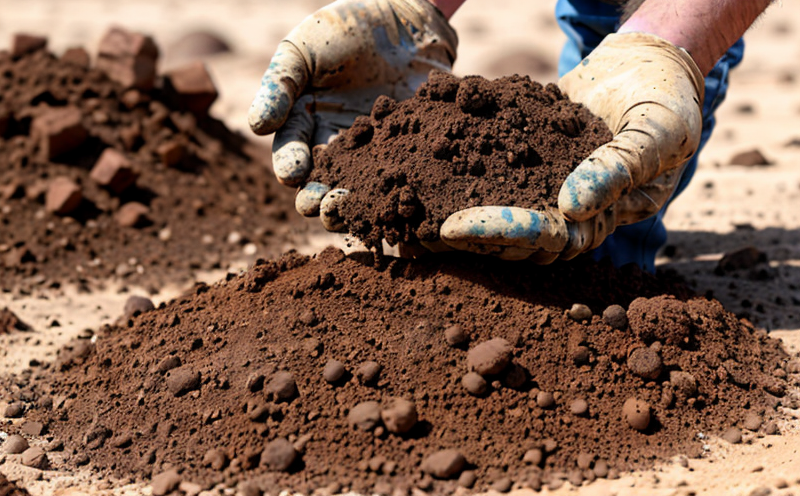ASTM D5084 Hydraulic Conductivity of Saturated Soils Testing
The ASTM D5084 test method is an essential tool used by mining and environmental professionals to determine the hydraulic conductivity of saturated soils. This measurement is critical for understanding the permeability of soil materials, which directly influences water flow rates through these materials. The test provides insight into how easily water can penetrate and move within the soil matrix under saturated conditions.
The process involves saturating a cylindrical sample with distilled water until it reaches equilibrium. A pressure head is then applied to one end of the cylinder while the other end is sealed off, ensuring no leakage occurs during measurement. The rate at which water flows through this confined space can be quantified using Darcy's Law, which relates hydraulic conductivity (K) to the slope of the pressure gradient and cross-sectional area.
Understanding soil hydraulic conductivity is crucial for several reasons:
- Evaluating the effectiveness of ground water treatment systems
- Assessing potential risks associated with contaminant migration
- Designing appropriate drainage solutions in mining operations
- Predicting long-term stability and performance of engineered structures within mine environments
The ASTM D5084 test is particularly valuable when dealing with challenging conditions such as highly fractured rock formations or dense clay soils. It allows engineers to make informed decisions about the suitability of different materials for use in various applications.
Key Considerations:
- Samples: Typically, samples are taken from boreholes drilled into the desired strata
- Preparation: Samples must be thoroughly cleaned and conditioned before testing to remove any contamination or loose particles that could affect results
- Instrumentation: High precision equipment is required for accurate measurement of both pressure heads and flow rates
- Data Analysis: Results are analyzed according to ASTM D5084 guidelines, providing a standardized basis for comparison across projects
The accuracy and reliability of the results produced by this method depend heavily on proper sample preparation, consistent application of pressure heads, and careful monitoring of flow rates. Any deviation from standard procedures may lead to erroneous conclusions regarding soil properties.
| Condition | Impact |
|---|---|
| Inadequate Sample Preparation | Potential for incorrect hydraulic conductivity values leading to poor decision-making |
| Varying Pressure Head Application | Incorrect measurement of flow rate, affecting overall result validity |
| Lack of Monitoring | Missed opportunities to identify issues early on in the testing process |
The ASTM D5084 test is widely accepted and used globally. Its standardization ensures consistent results across different laboratories, making it a reliable choice for regulatory compliance purposes.
Customer Impact and Satisfaction
Implementing the ASTM D5084 hydraulic conductivity testing method helps mining companies meet stringent environmental regulations while also improving operational efficiency. By accurately assessing soil properties early in project planning stages, organizations can avoid costly mistakes later down the line. This includes preventing contamination incidents that could disrupt production schedules or result in fines for non-compliance.
One major benefit of using this testing method is improved risk management. With detailed information about potential water flow paths and contaminant migration routes, mines are better equipped to develop proactive strategies aimed at minimizing environmental impacts. For instance, if hydraulic conductivity indicates high permeability in certain areas, additional barriers might be installed to prevent unwanted movement.
Customer satisfaction also plays a significant role in the success of ASTM D5084 testing. When clients receive accurate and reliable data from reputable labs like ours, they gain confidence in their decision-making processes. This trust fosters long-term relationships between service providers and clients alike.
International Acceptance and Recognition
- The ASTM D5084 method has gained widespread acceptance across North America and Europe due to its rigorous standards and reproducibility.
- In Australia, this test is commonly employed in both academic research institutions and commercial laboratories to ensure consistent results.
- ISO 17025 accreditation adds another layer of credibility to our testing capabilities, ensuring compliance with international quality requirements.
- The method's popularity extends beyond just mining; it also finds application in civil engineering projects requiring detailed soil characterization.
Our commitment to excellence ensures that every test conducted adheres strictly to ASTM D5084 guidelines. This commitment translates into accurate, reliable data that meets both national and international standards.





